Northern Colleges Team Up to Tackle Rising Demand
News Center – May 2020
 “Never give up” is more than just a motto for physical therapy assistants. It’s a mantra.
“Never give up” is more than just a motto for physical therapy assistants. It’s a mantra.
For the busy professionals tasked with guiding patients around health challenges and impairments, patience is paramount, as a moment of frustration is often a sign that progress is right around the corner.
It’s also the approach that Mendocino and Shasta Colleges are taking with their new joint PTA program — debuting at Mendocino College during the COVID health crisis. With the same spirit of resilience that defines their most courageous patients, students are finding creative solutions to stay on track for these critical careers.
Anne Harvey, who spent two years stuck on waitlists trying to get into a PTA program, is a perfect example. When she was finally accepted to a Bay Area program in her third year of trying, the 200-mile commute from her home in Fort Bragg proved too much stress for her family. Harvey had to withdraw, put her goals on hold, and worked at a family resource center. When that job ended earlier this year, she was back to square one.
“I had finally thrown out my box of books and notes,” says Harvey.
That’s when a friend told her about Mendocino College’s hybrid Physical Therapy Assistant program, taught in conjunction with Shasta College, and her dream came back into focus.
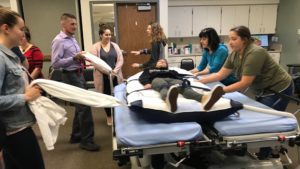 “When I first started, I really had lost all of my confidence,” confides Harvey, who was harboring serious doubts regarding her ability to resurrect her career path. Through the Mendocino program’s close partnerships with private PT offices and the local Adventist Health Hospital, she found plenty of avenues for success.
“When I first started, I really had lost all of my confidence,” confides Harvey, who was harboring serious doubts regarding her ability to resurrect her career path. Through the Mendocino program’s close partnerships with private PT offices and the local Adventist Health Hospital, she found plenty of avenues for success.
“There are a lot of options,” says Harvey. “I could open my own business because I’ve been an entrepreneur.”
The program was created on a hybrid model to make it easier for students from rural areas to attend, which suited Harvey perfectly. She did most of her coursework online, then came to the main campus in Ukiah two days a week for lab. The flexible schedule was stress-free, and due to the small class size, she was able to band together with other coastal students to form a study group. They would meet at Mendocino College’s Coast Center to practice their skill sets, which are the hands-on adjustments PTAs make for patients and a requirement students must demonstrate to get certified.
But just when Harvey had started to get her groove back, coronavirus surfaced and pushed all courses 100-percent online.
“I’m here completely alone, so I have no one to practice on,” says Harvey, whose husband is a nurse in San Francisco and must quarantine in a separate building in between shifts. While other students could film themselves practicing on family members, Harvey didn’t have that luxury.
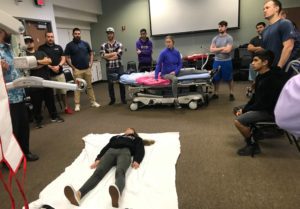 But the first rule of being a PTA is resilience… and often, that means finding creative alternatives. So, with the help of her professors, Harvey wasn’t going to let the crisis cramp her style.
But the first rule of being a PTA is resilience… and often, that means finding creative alternatives. So, with the help of her professors, Harvey wasn’t going to let the crisis cramp her style.
“We’re slowly but surely finding all of these workarounds,” says the intrepid student.
Harvey is considering attending a skill sets “boot camp” in the fall to catch up, and she’s also exploring other options with her professors to stay on course. Says Harvey about her devoted instructors, “They understand that everybody is in a different situation.”
For Harvey, the program’s ability to adapt has made all the difference in keeping on track and continuing to pursue her goals at full speed.
“We are very fortunate that the bulk of our program is online,” says Mendocino College Program Director Sara Bogner. She says that continuity for theory classes was “seamless,” and that labs already had online shells within Canvas that were easily enriched with additional resources. Meetings are now hosted on Zoom, including small breakout groups and one-on-one time with instructors, and students can submit videos of their skill sets to receive feedback. According to Bogner, “We were already very well set up to keep going.”
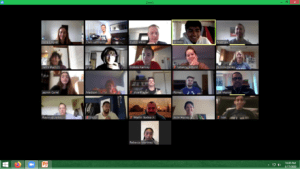 Lab demos are all done through video, filmed by the team of professors just before campus closed. According to Harvey, Mendocino’s instructional videos are even better than the various pay-to-access materials available.
Lab demos are all done through video, filmed by the team of professors just before campus closed. According to Harvey, Mendocino’s instructional videos are even better than the various pay-to-access materials available.
“Our teachers are really good,” says Harvey, adding that the virtual demos are personable, engaging and enjoyable to watch. “I think you’re learning just as much — and I think they [the professors] just have star quality.”
Created with Strong Workforce support, the College’s instructional videos have been such a hit that the program plans to continue to record them as supplemental materials, even when they return to the classroom. Additionally, the videos will give Shasta College’s new program a head start, when they launch their classes in January 2021.
“Another part of the collaboration is sharing materials, resources and information, and that’s been great from the beginning,” says Bogner. Her partner at Shasta College, Program Director Marcee Martinez, says that the group effort to create the program and troubleshoot COVID challenges has been gratifying.
“It’s really brought more breadth to what we’re providing for the students than we would have had otherwise,” says Martinez.
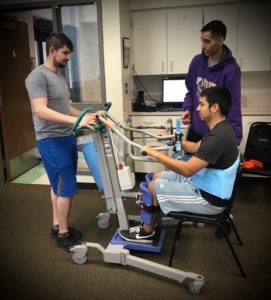 Classes are taught by both Mendocino and Shasta faculty, another way the small, widespread communities pool their resources. Not only do students benefit from flexible education, but the region wins as well.
Classes are taught by both Mendocino and Shasta faculty, another way the small, widespread communities pool their resources. Not only do students benefit from flexible education, but the region wins as well.
“Being able to generate a health care workforce that will benefit these rural areas is really, really huge,” says Shasta’s director.
This semester, a number of Mendocino College students were commuting from three to five hours to attend lab, from as far away as Modesto. And though Shasta’s program can only accept 24 students for next spring, its interest list has grown to more than 480 people, underscoring the critical need for expansion.
With demand growing at a staggering 31-percent rate annually in California, PTA is considered one of the top 15 fastest-growing occupations by the U.S. Bureau of Labor Statistics. It’s not a stretch, then, to say that the new joint program is crucial to the health care industry in both the region and the state.
“We’re going to cover everything from the Oregon border to Nevada and down to the edge of the Sacramento area,” says Martinez.
The two-year program culminates with three, full-time, six-week clinical experiences, in which students put their knowledge to work while networking with potential employers. With an associate degree in hand, grads can get on the fast-track to in-demand jobs in health care, with salaries averaging $67,500 in California, and climbing as high as $84,810.
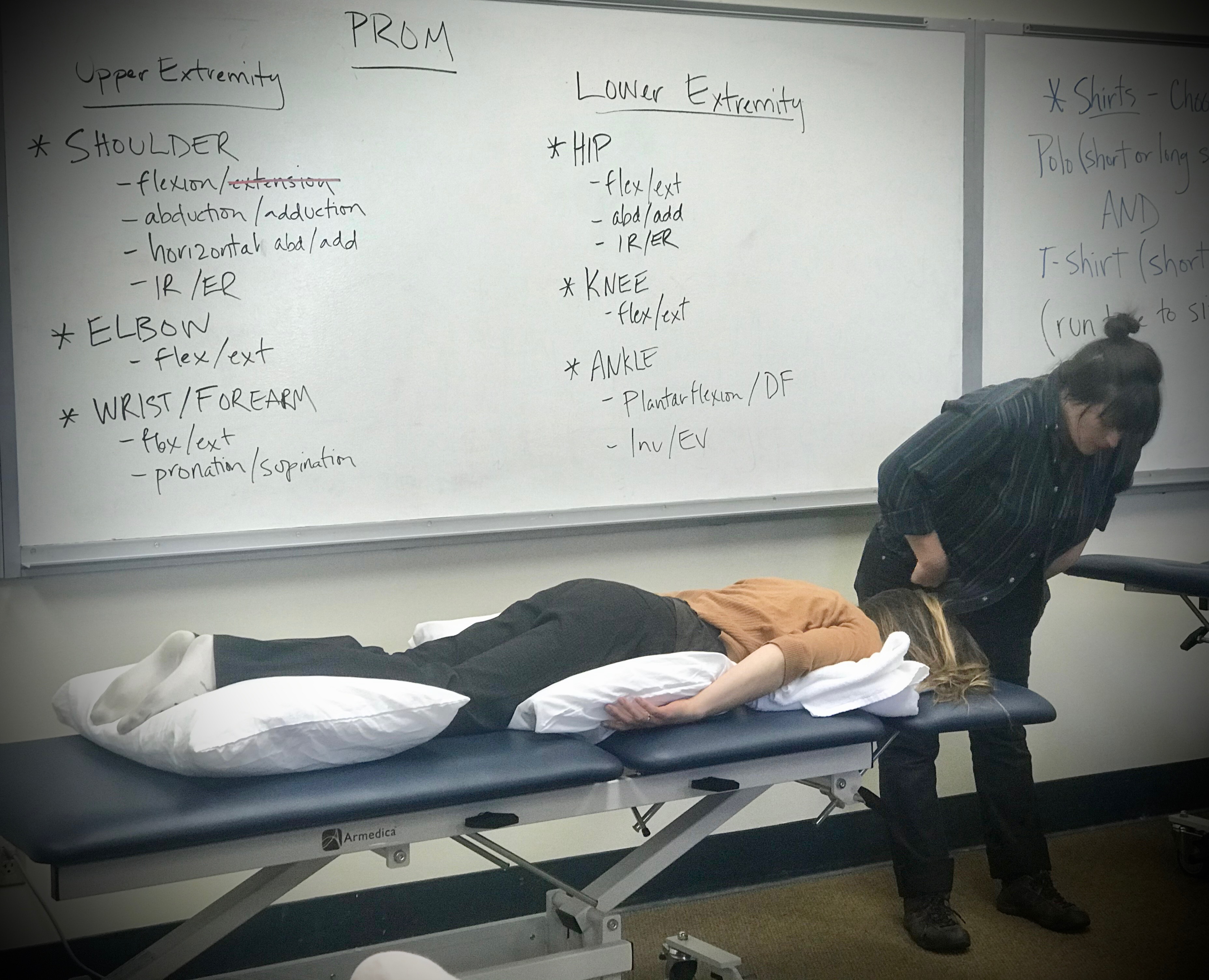 “It’s really affordable if you start to look at the cost of the program and how much the payoffs are for the wages after you’re done,” says Bogner, who adds that Strong Workforce funding has been critical in purchasing therapeutic equipment and hiring faculty, in addition to helping the program adapt to the health crisis.
“It’s really affordable if you start to look at the cost of the program and how much the payoffs are for the wages after you’re done,” says Bogner, who adds that Strong Workforce funding has been critical in purchasing therapeutic equipment and hiring faculty, in addition to helping the program adapt to the health crisis.
The call for caring health care professionals can’t be stopped by COVID, and for Martinez, the Colleges’ tremendous teamwork is a testament to the PTA mindset.
“You’ve got to go with the flow, adjust and adapt,” she says about the “PTA way.” “Sometimes, you have to be spontaneous and use critical thinking skills to make it happen.
“Getting our students through this — what a lesson they can learn.”